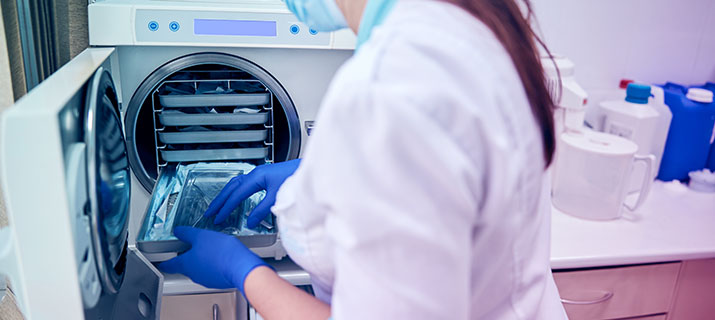
GxP Lifeline
Vision and Paperless Manufacturing Operations Make Northeast Scientific a Medical Device Industry Leader

Organizations within the health care community all share a common goal: reduce the soaring costs of health care without putting the quality of care or patient safety at risk. Many medical device manufacturing businesses are busily exploring ways to achieve this goal. One of the ways the industry is contributing is by repurposing single-use devices (SUDs).
Historically, devices designed to be used once had a short-lived life cycle. After a device served its purpose, it was simply discarded and replaced with a new one. Purchasing new SUDs drove up the cost of health care — it also added to the collection of discarded devices piling up in landfills. Now, by employing good manufacturing practices (GMPs) for medical devices, SUDs can be cleaned, sterilized, and restored to their original condition. Therefore, these devices can, and should, be reused.
Driven by a mission to “profoundly change the medical device industry, using innovative methods and compliant processes,” medical device remanufacturer Northeast Scientific, with the help of medical device manufacturing software, is making SUDs usable again. The devices Northeast Scientific remanufactures are high-cost catheters used in vascular interventions, which include:
- VNUS ClosureFAST® Catheters.
- RF Stylets.
- Philips Volcano®.
- IVUS diagnostic catheters.
- And more.
Filling a Remanufacturing Need
A current trend in health care is that more physicians are leaving the hospital environment and setting up shop in office-based labs (OBL). These health care providers greatly benefit from remanufactured devices as they are approximately half the price of those developed by original equipment manufacturers (OEMs).
For example, in an atrial fibrillation (AFib) case, where the device cost is about $10,000, reprocessing just four devices within a lab brings device cost for the procedure down to about $7,000 — a 30% savings. This type of savings in medical device manufacturing can make the difference between a financially sustainable electrophysiology (EP) lab and one that is not.1
“It’s really about finding high-cost, complex devices that we can reprocess, remanufacture, and bring that cost savings to the [physicians] where they can then reinvest those cost savings into delivering better health care,” said Craig Allmendinger, CEO and president of Northeast Scientific.
In addition to driving down health care costs, remanufactured medical devices make a valuable contribution to preserving the environment. According to a study conducted by the Fraunhofer Institute for Environmental, Safety, and Energy Technology, “hospitals could cut emissions associated with some medical device use in half by opting instead for remanufactured ‘single-use’ devices.”
The study’s authors researched 16 impact categories and found remanufactured catheters superior to original catheters in 13 of the categories, including:2
- Ozone depletion – Remanufactured devices reduced ozone depletion by nearly 90% (89.7%).
- Climate change – Remanufactured catheters cut CO2-equivalent emissions in half (50.4%).
- Photochemical ozone formation – Remanufactured devices reduced human health-impacted photochemical ozone formation by 72.8%.
- Respiratory inorganics – Remanufactured devices reduced disease incidents from respiratory inorganics by 66.8%.
- Cancer human health effects – Remanufactured catheters reduced cancer-causing human health effects by 60.9%.
Corralling Document Management
Medical device manufacturing is accompanied by an exponential amount of paperwork, given that each device has a device history record (DHR). Managing all the necessary documentation for the many devices Northeast Scientific remanufactured was complex and prone to errors. “There’s a slow turnaround time for reporting,” said Evan Rife, manufacturing engineer at Northeast Scientific. “We [often waited] for finished product to get out to determine what the yield is for the lot, and all the paperwork moves in unison.”
Using MasterControl, Northeast Scientific is better able to manage documentation because the company is eliminating paper. Using a modern MES software like MasterControl Manufacturing Excellence means there are no more lost or damaged documents, no more waiting for documentation to be completed, and no more searching through filing cabinets and boxes to find a record and scan it for an audit.
“We [couldn’t] continue to do what we’ve been doing and find the growth that we’re trying to do and find the excellence that we’re trying to reach without getting rid of the paper-based system,” said Allmendinger.
Read the Northeast Scientific case study to learn more about the company’s growth and scalability successes.
References:
- “Use of Catheter Reprocessing to Reduce Cath and EP Lab Costs,” Lars Thording, Diagnostic and Interventional Cardiology (DAIC), Dec. 19, 2017.
- “Global Warming Impact of “Single-Use” Medical Device Cut in Half When Remanufactured Device Uses Instead, According to Newly Published Research in Sustainability,” Business Wire, Jan. 15, 2021.

